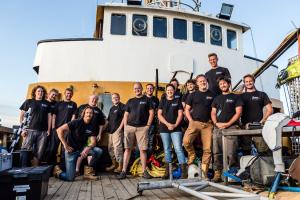Rooswijk, a Dutch East India Company ship that sank off the coast of England in 1740 is at high risk and declining due to strong currents and shifting sands. Historic England provided specialists and research facilities to analyse artefacts recovered during excavations in 2017 and 2018.
| In 1740, the Rooswijk was outward bound for Batavia (modern-day Jakarta) with trade-goods when it sank on the treacherous Goodwin Sands. Now a protected wreck site, the ship's remains lie at a depth of some 20 metres off the Kent coast. The ship’s remains are owned by the Dutch Government and managed by Historic England on behalf of the Department of Digital, Culture, Media and Sport The #Rooswijk1740 project started in 2016 when the wreck was determined to be high risk. The project is funded and led by the Cultural Heritage Agency of the Netherlands (Ministry of Education, Science and Culture) in collaboration with partner Historic England and UK contractor MSDS Marine. Artefacts recovered from excavation in 2017 and 2018 were transported to Historic England’s research facilities at Fort Cumberland, Portsmouth. Historic England scientists, archaeobotanists and marine conservation specialists analysed finds such as coins, glass beads, wine and gin bottles, plant and insect remains, and other unknown materials.2560 objects discovered on the Rooswijk were returned to The Netherlands in November 2023, including over 1800 silver coins, trade goods such as thimbles and candle sticks, and personal items. They are now stored at the National Maritime Depot in the Netherlands. |



